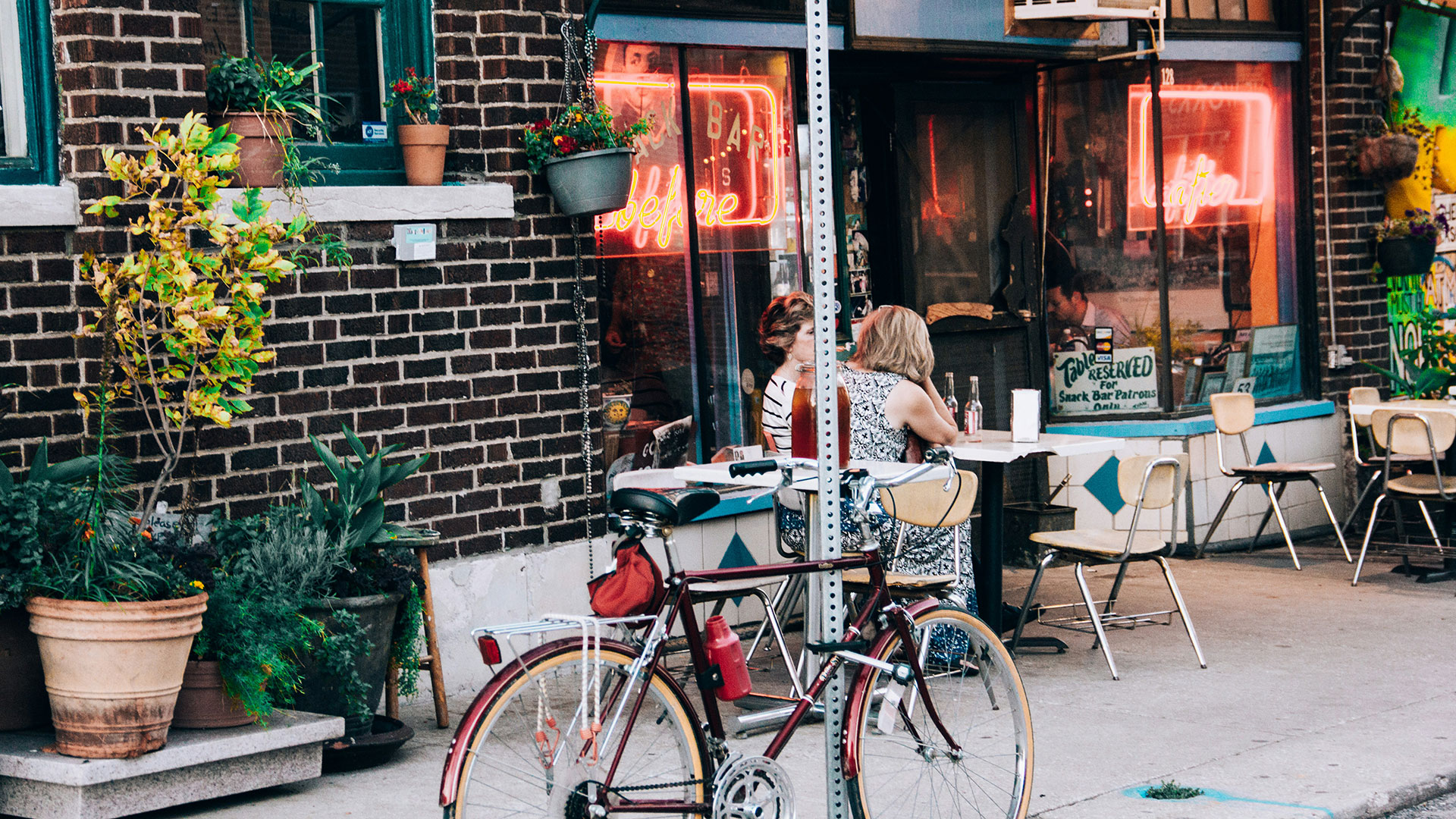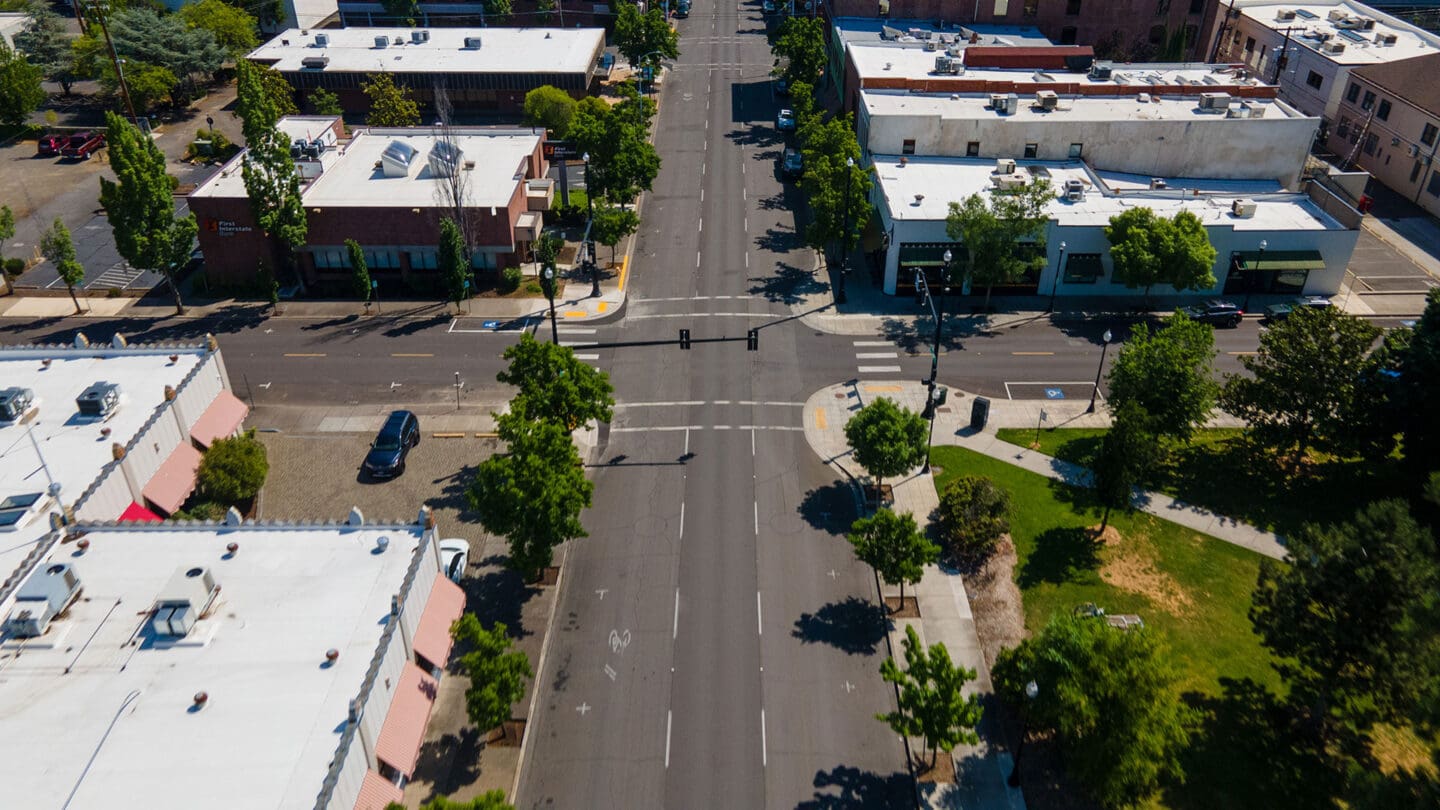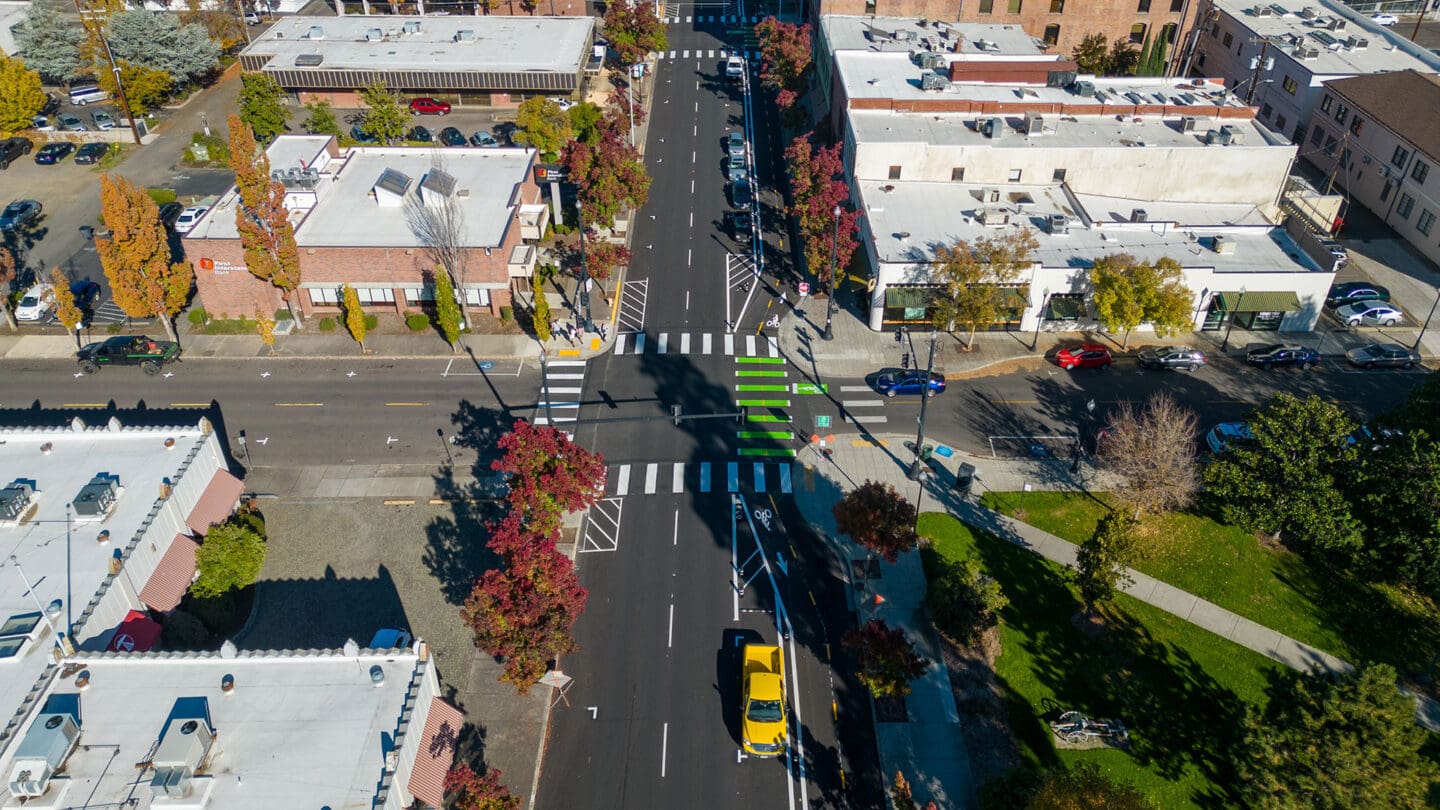January 29, 2024
As cities across the country work to make their streets safer and more comfortable for multimodal travel, communities are increasingly required to consider the tradeoff between bikeways and on-street parking. A common concern is whether the reduction in on-street parking in front of businesses will hurt business. At this point, enough projects have been completed in this exact scenario that we can begin to draw conclusions regarding the true impacts. So what do we see?
The Transportation Research and Education Center (TREC) at Portland State University released a study, conducted along with PeopleForBikes and Bennett Midland, that researched the economic effects of bicycle infrastructure. TREC examined 14 corridors in Portland, Seattle, San Francisco, Memphis, Minneapolis, and Indianapolis. The study found the new infrastructure for people walking and biking had either positive or non-significant impacts on the local economy as measured through sales and employment.
For example, a protected bike lane in Seattle saw a 30.78% increase in food service employment on that corridor compared to 2.49% and 16.17% increases in control areas. “The findings refute assertions made by bike infrastructure critics that new lanes hurt adjacent businesses by making car access less convenient,” says TREC.
And this study is not the first of its kind. Three years after installing bike lanes or pedestrian-friendly areas on seven stretches of road, New York City’s Department of Transportation found that sales were growing up to five times faster on five of those streets than in the borough overall.

The Transportation Research and Education Center (TREC) at Portland State University examined 14 corridors throughout the United States and found that new infrastructure for people walking and biking had either positive or non-significant impacts on the local economy as measured through sales and employment.
Well-designed active transportation facilities encourage residents and visitors to spend time (and money) in city centers and neighborhood hubs through creating an attractive sense of place, making quick trips more convenient for people who live close by, and inviting a slower pace and awareness of surroundings that’s difficult to experience when driving through in a car.
For example, we recently had the opportunity to lead the design of new bicycle facilities along Main Street in Medford, Oregon. While the project was just implemented in late 2023, business owners are already finding that not only are more people walking and biking in the area, but the resulting slower traffic speeds have resulted in a more pleasant environment for everyone, attracting new visitors.

A "before" shot of the City of Medford's downtown. The City sought active transportation facilities that would draw residents and visitors to spend more time downtown.

A two-way, parking-protected bike lane was installed on Main Street through repaving.
Additionally, bike facilities do not always come at the expense of parking. In some cases, the two can work together, with parking acting as separation between people biking and vehicle lanes. Often, small reductions in parking are still required at intersections. The results of these efforts tend to match the previous findings.
That said, as infrastructure is installed, some businesses are finding ways to capitalize on the new infrastructure even if they did not see a lot of bicycling traffic before. For example, in San Diego’s North Park Neighborhood, the City recently installed protected bike lanes on 30th Street by removing much of the previous on-street parking. In response, many businesses began offering discounts for people arriving by bike and the Main Street North Park Association started hosting a monthly “30th on 30th” event to encourage people to patronize local businesses by bike.
Finally, the benefits of bicycling go far to meet the goals of many cities (that driving fundamentally detracts from). These include improved physical and mental health; money saved from costs related to driving, healthcare, and other services which can free up disposable income; placemaking and the beautification of areas where bike infrastructure is installed; and environmental benefits. These benefits go beyond the design of any individual street and contribute to healthier, more vibrant communities as a whole, meaning that bike lanes can be good for business on a large scale.
